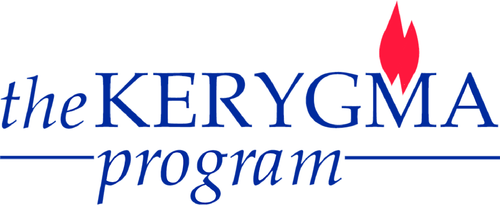Bible Study Groups—Staying Connected
Whether for worship or prayer, for Bible study or simply to share a meal, gathering together is a major part of Christian life, but with the practice of physical distancing to slow the spread of COVID-19, schools, from elementary to university, transitioned to online learning platforms.
The week of March 16th, as business and office closures began across US towns, cities, and states, churches had to decide what to do about worship. Congregations, large and small, began making the shift to worshiping together—virtually. Bible study groups would soon follow.
While the country paused in the midst of the closures, Kerygma received orders for one Resource Book here, a Resource Book there, as individuals and couples planned to do personal Bible study in the midst of stay-at-home guidelines. That people use personal time to study the Scriptures is encouraging at any time.
But then, an email arrived with an order for, not one, but multiple Resource Books for a Kerygma study! A Bible study group in Michigan was planning to meet together—online.
Connie, a member of the study group, told me, “By the fourth week after Easter, we decided that something needed to happen.”
“Most of the members of our group use some form of technology—cell phones, ipads, etc. While a couple of participants in the group said that a remote Bible study was not for them, others decided to make it work. Some were ready and eager to make the transition to an online platform for virtual Bible study sessions together; those who were new to technology needed encouragement.”
Participants ready for transition to an online meeting, spent time on the phone, coaching those who were less comfortable but eager to learn. “Basically we took each other by the hand and walked down this new road together,” Connie recalled.
Now that the group meets online every week, participation has grown. Members of households are joining in. “After all,” Connie explained, “they don’t have to drive anywhere to get to the meeting; they just push a button and they are ‘in the meeting.’”
Whether via Zoom, Google Hangout, Facebook Live, Microsoft Teams, or Skype, group members are connecting—to see and hear each other, to study scripture, and to pray together.
A look back shows the technological paths we have traveled in just the last 100 years. In 1922, the first commercial radio station on record, KDKA, broadcast over the airwaves from Pittsburgh, PA. A local Pittsburgh congregation, Shadyside Presbyterian, began broadcasting its pastor’s sermons over KDKA, also in 1922. The first commercially licensed TV station began broadcasting from suburban Washington DC in 1928. Television broadcasts of church worship services first appeared in the 1950s, along with televised public gatherings where preaching was central, such as the Billy Graham crusades. In 1993, the World Wide Web established its status in the public domain. By the mid-1990s email Internet Service Providers, or ISPs such as AOL, were serving growing public interest in digital connection. As one example of social media platforms that followed, Facebook launched in 2004. We have been online ever since.
While television broadcast of worship services in the past may have been limited to larger churches, congregations of any size eventually were able to broadcast or record their services on their websites or other social media platforms.
Still, recent physical distancing guidelines required churches to pivot very quickly, “learning as we went along,” Peter, a church communications staff member told me, “and making many decisions, because there are so many options.” Do you use closed circuit or Internet? Do virtual backgrounds look better? How do you include all parts of a service that congregations know and appreciate as part of corporate worship?
A Bible study group in New York seemed to view their shift to an online platform as a normal part of what a church does in the face of change--whether that change was anticipated or unexpected. Like a sail boat, it shifts the sails and tacks against the wind to reach its desired course. One member of the group, Tom said that the group’s shift to meeting online was "...like starting a Model-T that hasn't run for a while."
Cathy, their pastor said, "We realized that either we do something, or we wouldn't do anything. The initial practice run was crucial to our success. After that, it has flowed. It is a tribute to the group’s willingness to be flexible—the circumstances do that to us—and to their desire to not stop meeting together. There was lots to learn. Still, it’s so worth it to be able to see one another.”
When describing Kerygma studies her group has used, Connie explained, “Kerygma materials help to give us a reason and a purpose to gather. We enjoy getting together, exploring the scriptures together, discussing passages as a group. We are focusing on something and having meaningful conversation.”
Those who have had to shift to working remotely as well as those who have long had to telecommute may be growing weary of online screen time. But the church isn’t. Not yet.
We’re just discovering its potential both to enable us to gather and to make disciples.

